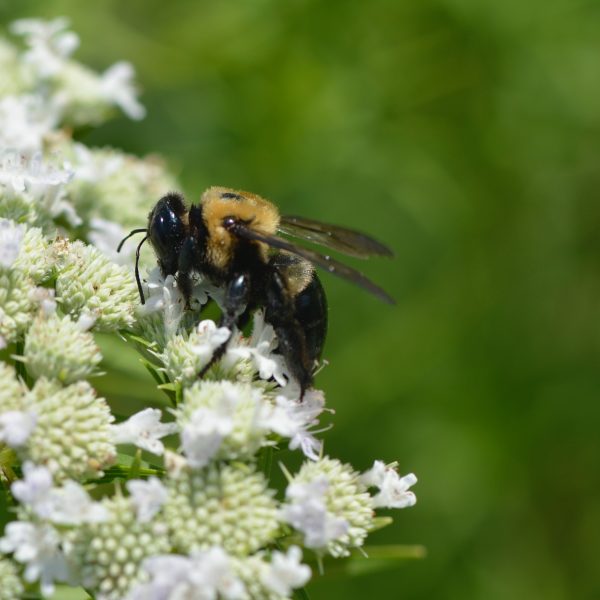Originally appeared at National Gardening Bureau.
1. Plant for a succession of blooms throughout the growing season.
Different pollinator species emerge at various times of the year and have different lifespans and periods of activity. Create an ongoing pollinator buffet throughout the growing season by planting a succession of overlapping blooms.
2. Include some native plants to support pollinators and your ecosystem.
Evolution matters! Native pollinators have evolved with native plants and may excel at pollinating those species. In some cases, pollinators and plants are dependent on each other. Let Mother Nature be your guide in plant selection.
3. Plant a diverse array of plants with different flower shapes, sizes, and colors.
Each type of pollinator is attracted to different plant characteristics. Not every pollinator can access the same kind of flower, either—some need very open flowers while others can use more closed flowers or long, tubular flowers.
4. Incorporate flowering trees, shrubs, and vines in your landscape.
Many woody plants offer a volume of flowers that can feed a large number of pollinators. Early-blooming trees and shrubs are often critical sources of nectar or pollen early in the season. Some woody plants are also larval host plants for butterfly and moth caterpillars and provide habitat to birds and other creatures
5. Create floral targets for pollinators.
Make it easier for pollinators to find flowers by planting enough of each plant species to feed them. Sizeable patches (3 square feet+) of the same plant are the easiest for pollinators to find. In naturalistic gardens without true groupings, repeat each plant species throughout the area – pollinators will find them.
6. Provide nesting sites for pollinators in your landscape.
Seventy percent of native bee species nest in the ground and need bare soil in a sunny spot. Dedicate small areas to these ground-nesting bees and keep those zones free of foot traffic. Accommodate the other 30 percent of bees that nest in old mouse holes, tree cavities, pithy plant stems, dead trees, crevices in stone walls, and the like. Other types of pollinators have different habitat needs—a well-layered landscape (trees, shrubs, vines, and perennials) will accommodate most of them.
7. Add some single-flowered plants—they provide easy access for pollinators.
Bees and other pollinators don’t want to have to work to get their food. Open, single-flowered plants provide easy access.
8. Reduce or eliminate pesticides from your garden.
Synthetic pesticides and some organic products can be reduced without major damage to most gardens. Skip pesticides altogether and attract nature’s pest control (beneficial insects) to your garden with plants that support them. In all cases, responsible use according to label directions is important.
9. Reduce or eliminate your lawn.
Turfgrass lawns are ecological wastelands for pollinators. Determine how much lawn you really need and replace the rest with plants suggested above. For any lawn you keep, manage it responsibly.
10. Add a pollinator habitat sign to your landscape.
Help raise awareness about the importance of pollinators and make a point of showing off your Pollinator Victory Garden to family members, friends, and neighbors with a pollinator habitat sign.
Read more at the National Gardening Bureau.

